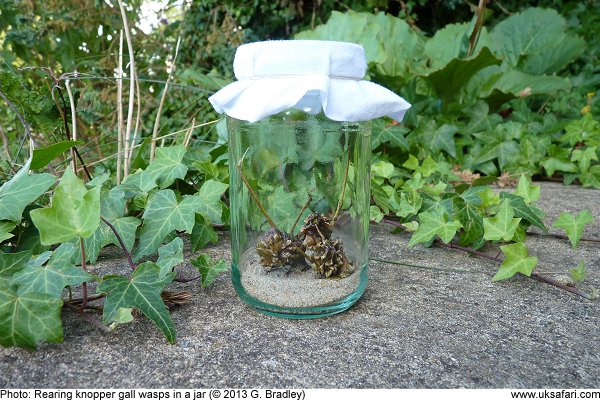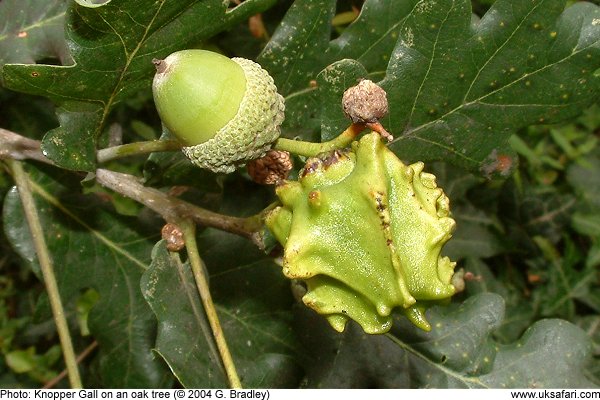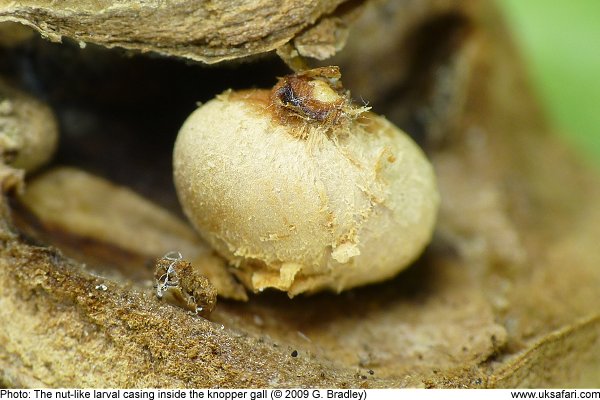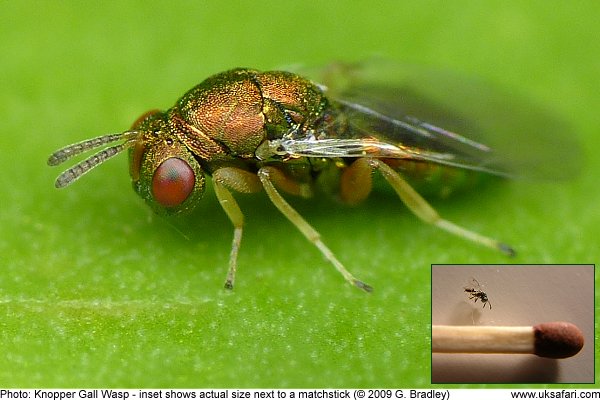 Knopper Galls
Knopper Galls
News > Knopper Galls >

If you look on the ground beneath an oak tree this month you'll most likely find some fallen acorns which appear ridged and distorted. They look more like a lump of popcorn than a nice oval acorn. These are known as 'knopper galls'. When they first form in July or August they're a green colour and sticky to the touch. After a month or so they become brown and woody.
They're caused by a tiny gall wasp called Andricus quercuscalicis, which lays its eggs in the oak buds. This is just one of 30 species of gall wasps which occur in the U.K. on the common oak. These Knopper Gall wasps first appeared here in the 1960's and have rapidly spread.

Chemicals secreted by the wasp grub alter the normal cell division process and cause the oak tree to produce gall tissues which enclose the grubs providing both protection and food. The grubs feed on a nutritious layer of cells inside the galls.

Eventually the grubs pupate and turn into adult wasps. These insects have complex life cycles involving alternating sexual and asexual generations. The generation of gall wasps that hatch from these galls in the springtime are all females. They make their way to Turkey Oak trees (an introduced species) where they lay their eggs on the catkins. From these eggs both males and females hatch to lay the eggs that will produce the knopper galls.

If you want to see the female wasp emerge you can collect a few knoppers and put them in a clean jam jar, with a bit of sand in the bottom (to prevent mould forming) and a bit of muslin over the top held in place with an elastic band. Check the jar a few times a week. The wasps will only survive for a few days after emergence, so release them as soon as you've had a good look at them.
More info at: UK Safari Galls Section

 Popular Pages
Popular Pages
Amphibians, Bats, Badgers, Beetles, Birds, Birds of Prey, Bumble Bees, Butterflies, Caterpillars, Creepy-Crawlies, Deadly Spiders, Dolphins, Dragonflies, E-Postcards, False Widow Spiders, Free Newsletter, Frogs, Fungi, Garden Spiders, Glow-Worms, Grey Squirrels, Hedgehogs, House Spiders, Ladybirds, Mammals, Marine Mammals, Moths, Owls, Reptiles, Spiders, Toads, Trees, Wildlife Hospitals
© Copyright 2017 G. Bradley - UK Safari | About Us | Links | Contributors



 Related Pages
Related Pages
